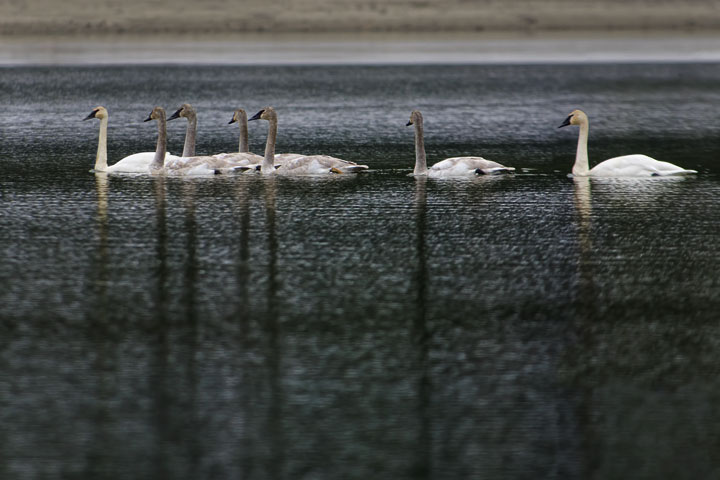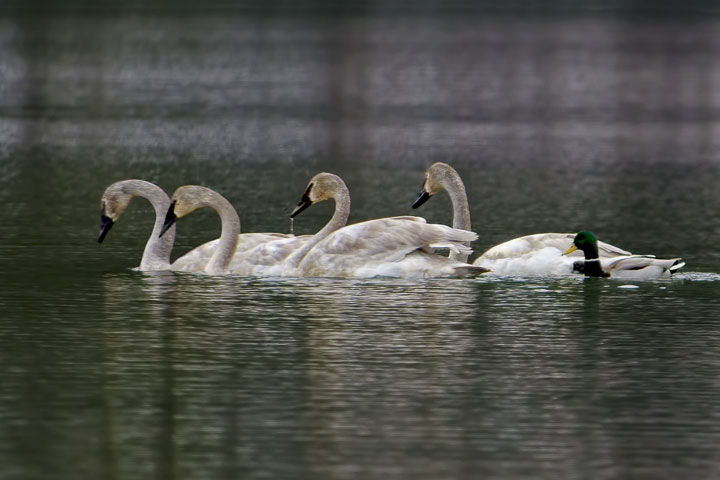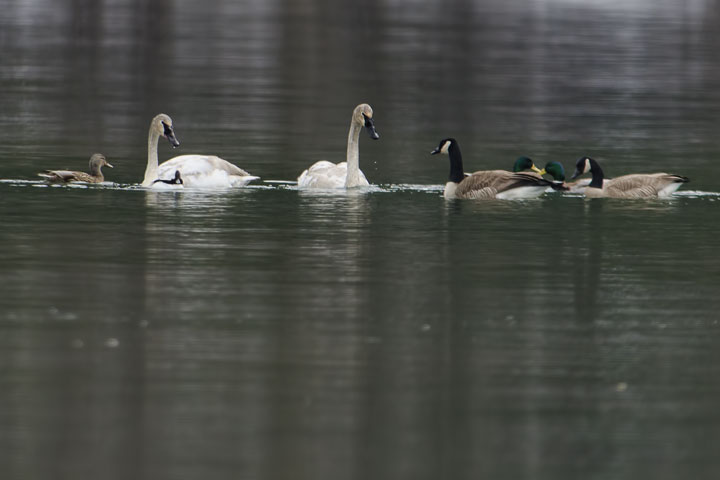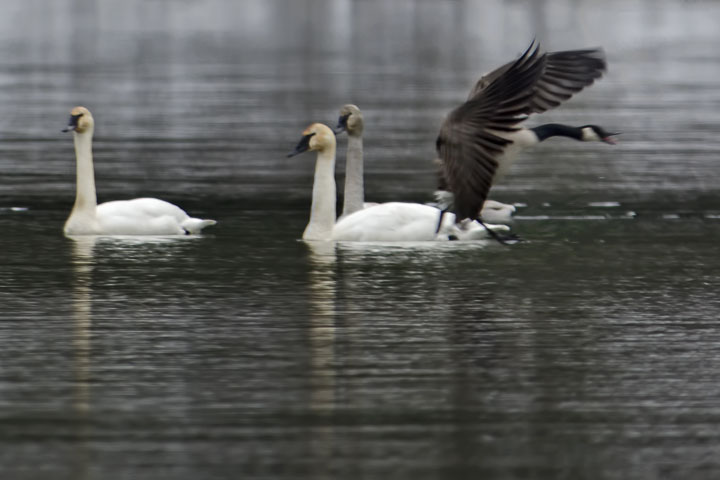Swans are already flooding into the Creston Valley on their way north. I normally think of April as the month to view swans migrating along the West Arm, but everything seems to be early this year. For the last few days, there has been a family of seven Tundra Trumpeter Swans in shallows off the mouth of Kokanee Creek. Mind you, they are a fair way offshore, so are a bit difficult to photograph.
The family of seven Tundra Trumpeter Swans, with two adults (whitish) and five cygnets (greyish), languidly paddles upstream in the shallows south of Kokanee Creek Park.

These four cygnets have just lifted their heads out of the water after dabbling. Their long necks enable them to feed on the bottom in the shallows. The mallard accompanying them is also a dabbler, but the Lake is too deep here for its short neck to enable it to reach the bottom.

The swans quickly attracted other waterfowl: mallards, geese, and even buffleheads. Why? This small portion of the Lake may be sufficiently shallow for the swans to feed on the bottom, but it is not shallow enough for the smaller geese and mallards. It seems that the swans stir up the bottom with their bills and feet. Edible debris floats to the surface where the other waterfowl take advantage of it. So, when swans feed, other waterfowl gather.

As spring is approaching, the geese are squabbling over mates amidst considerable clamor and flapping. The swans and mallards just seem to ignore the ruckus—oh well, those factious geese are at it again.

